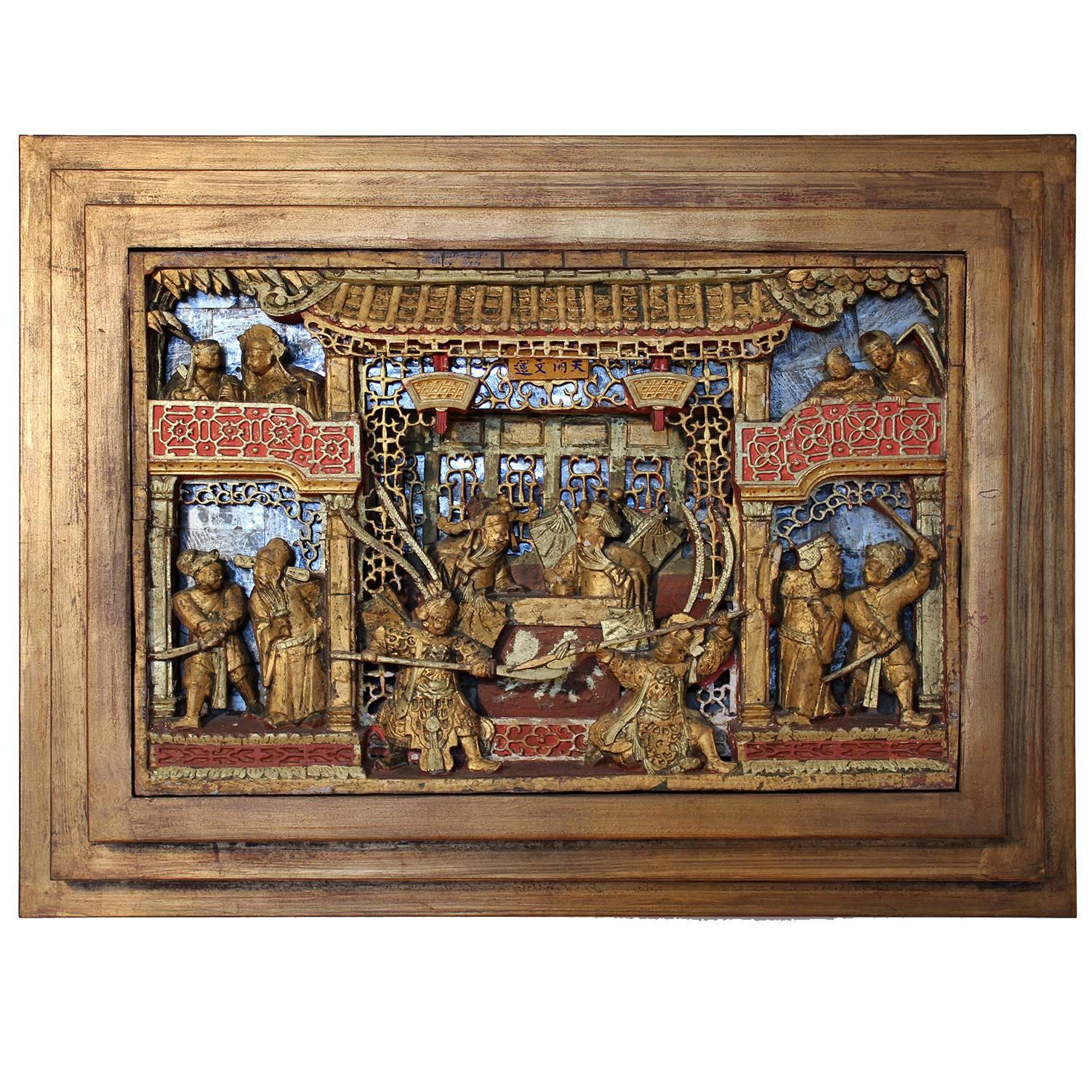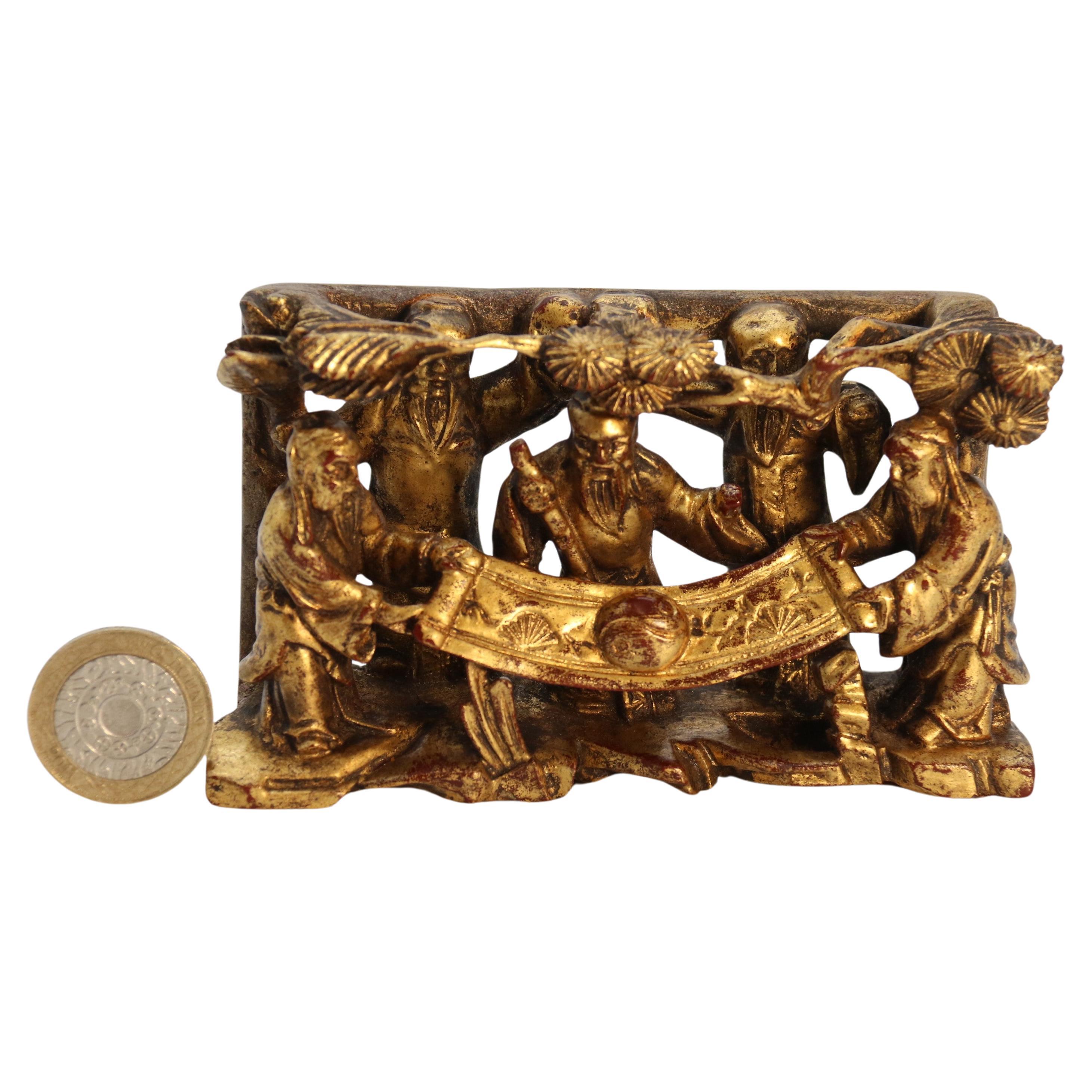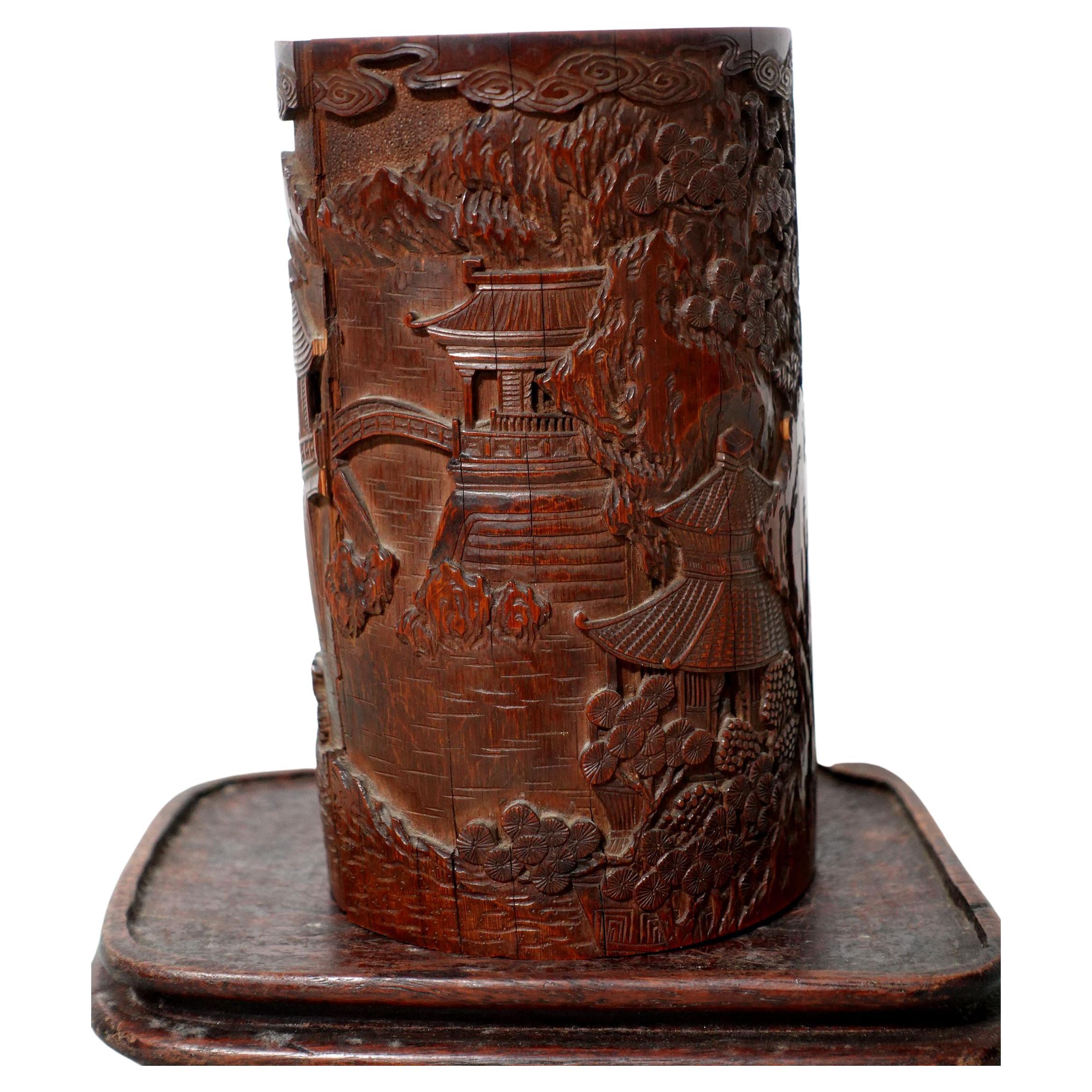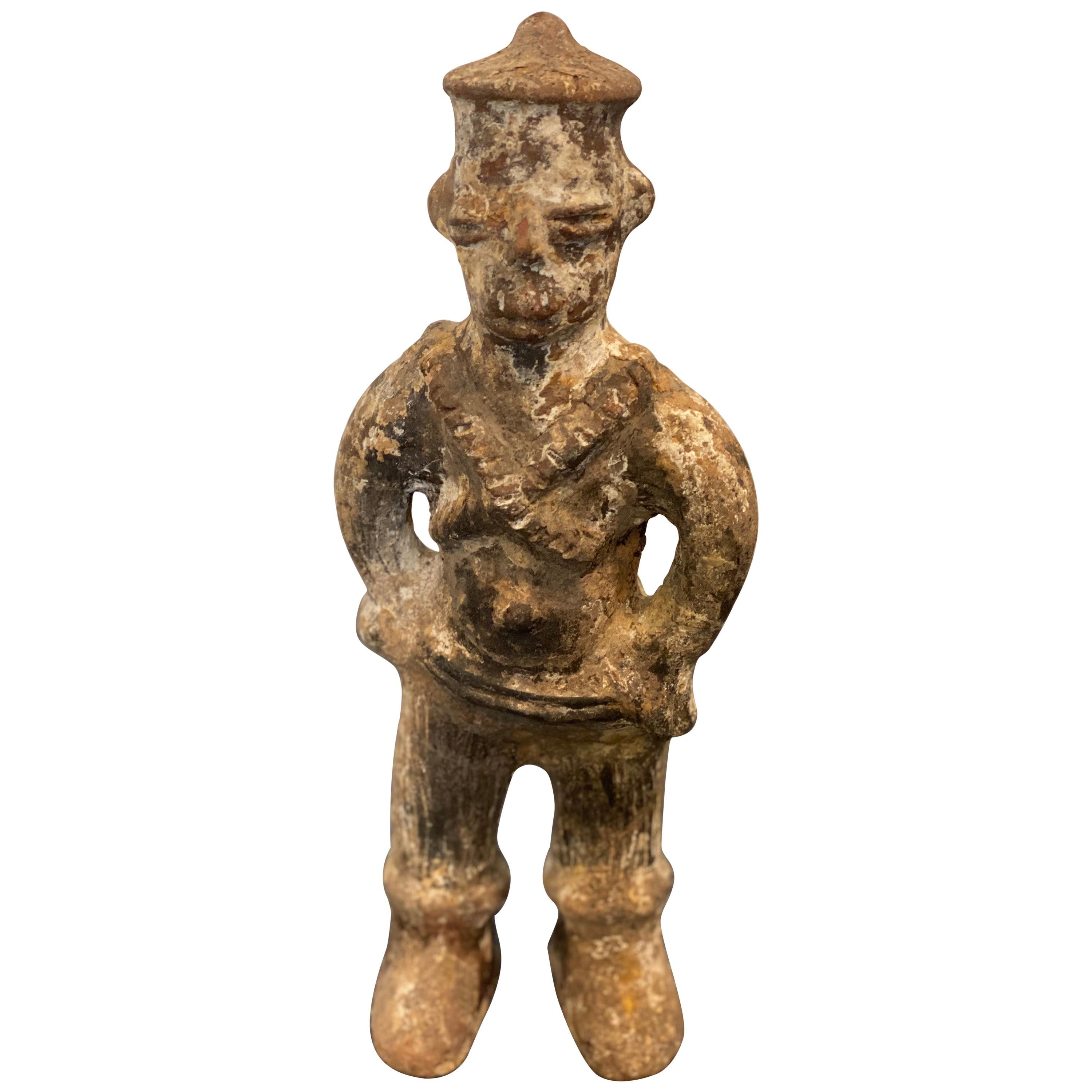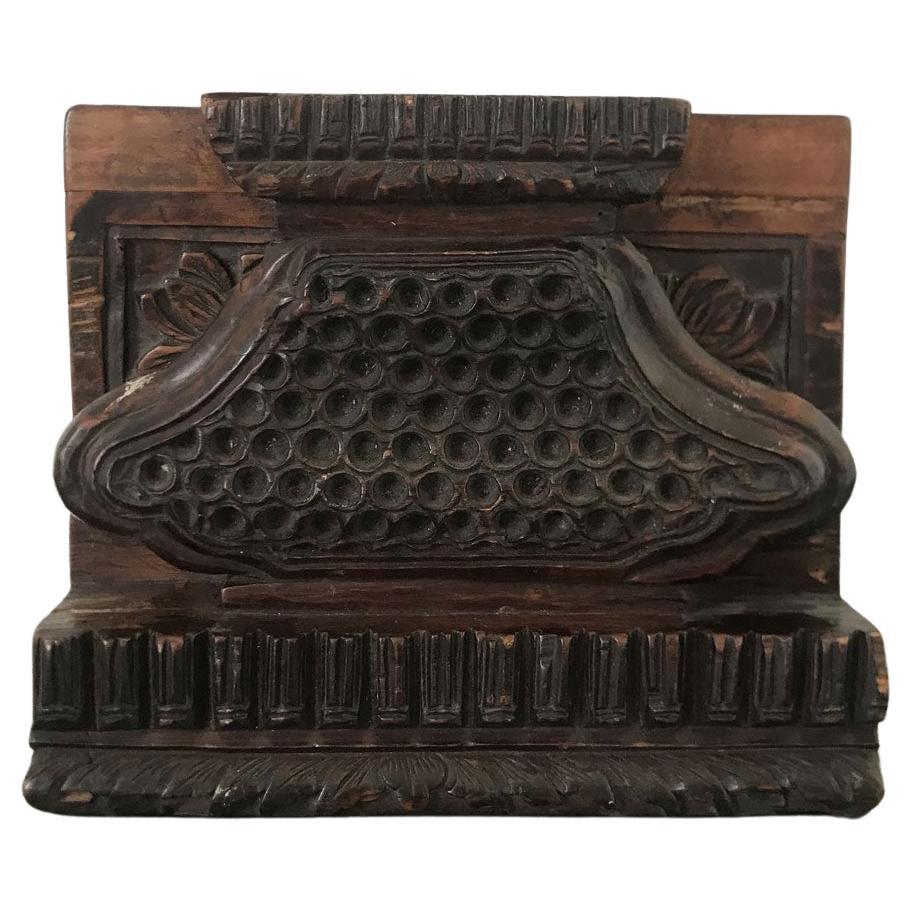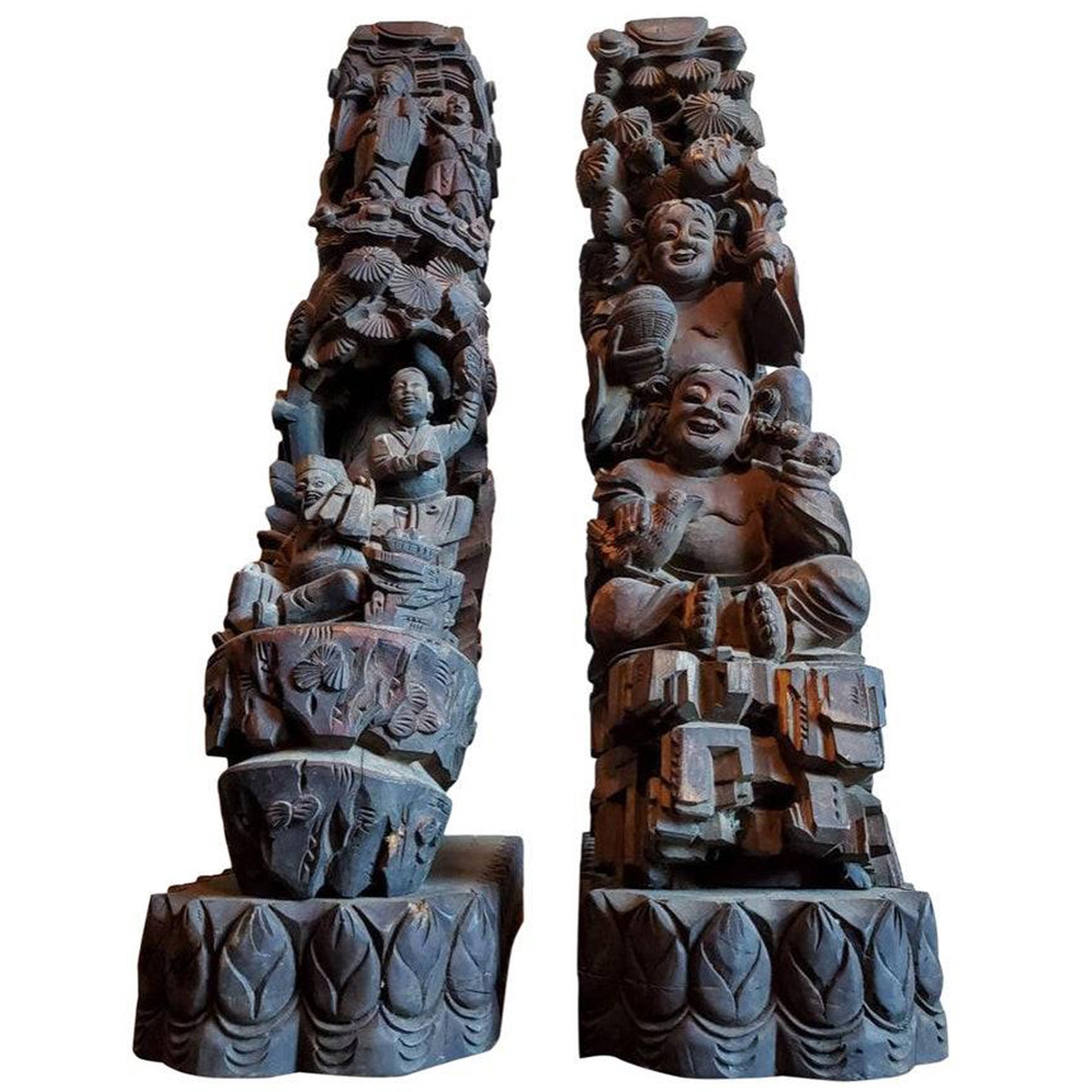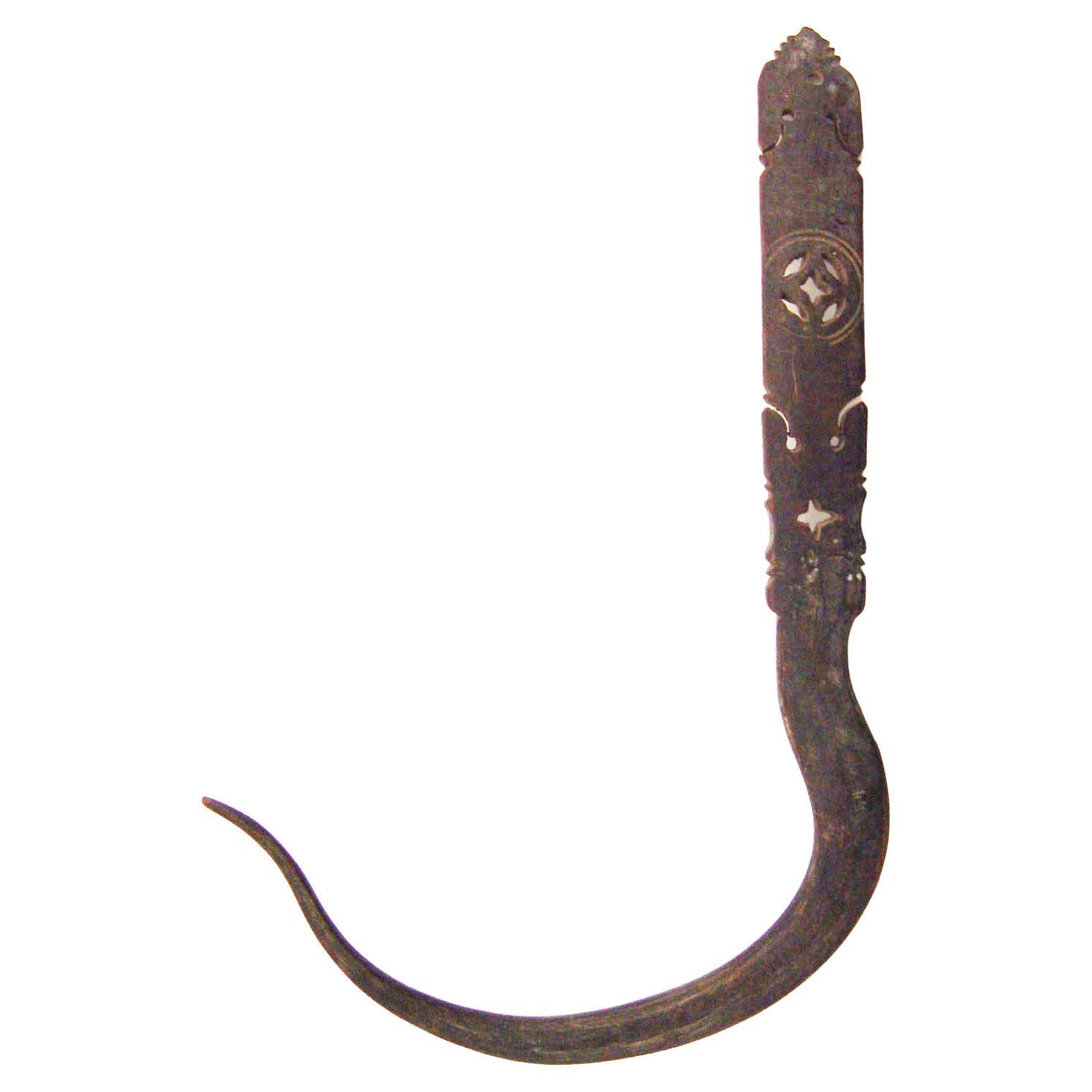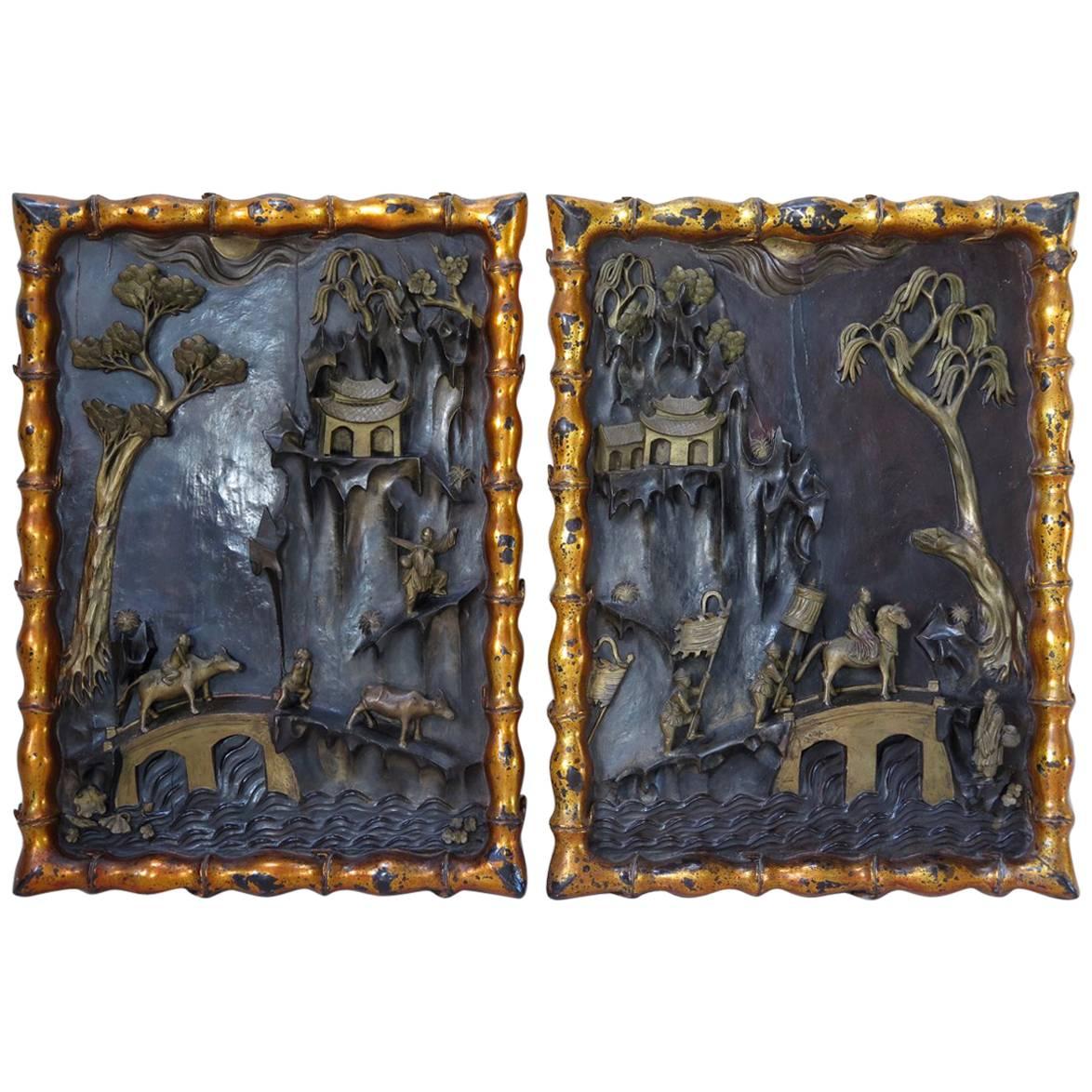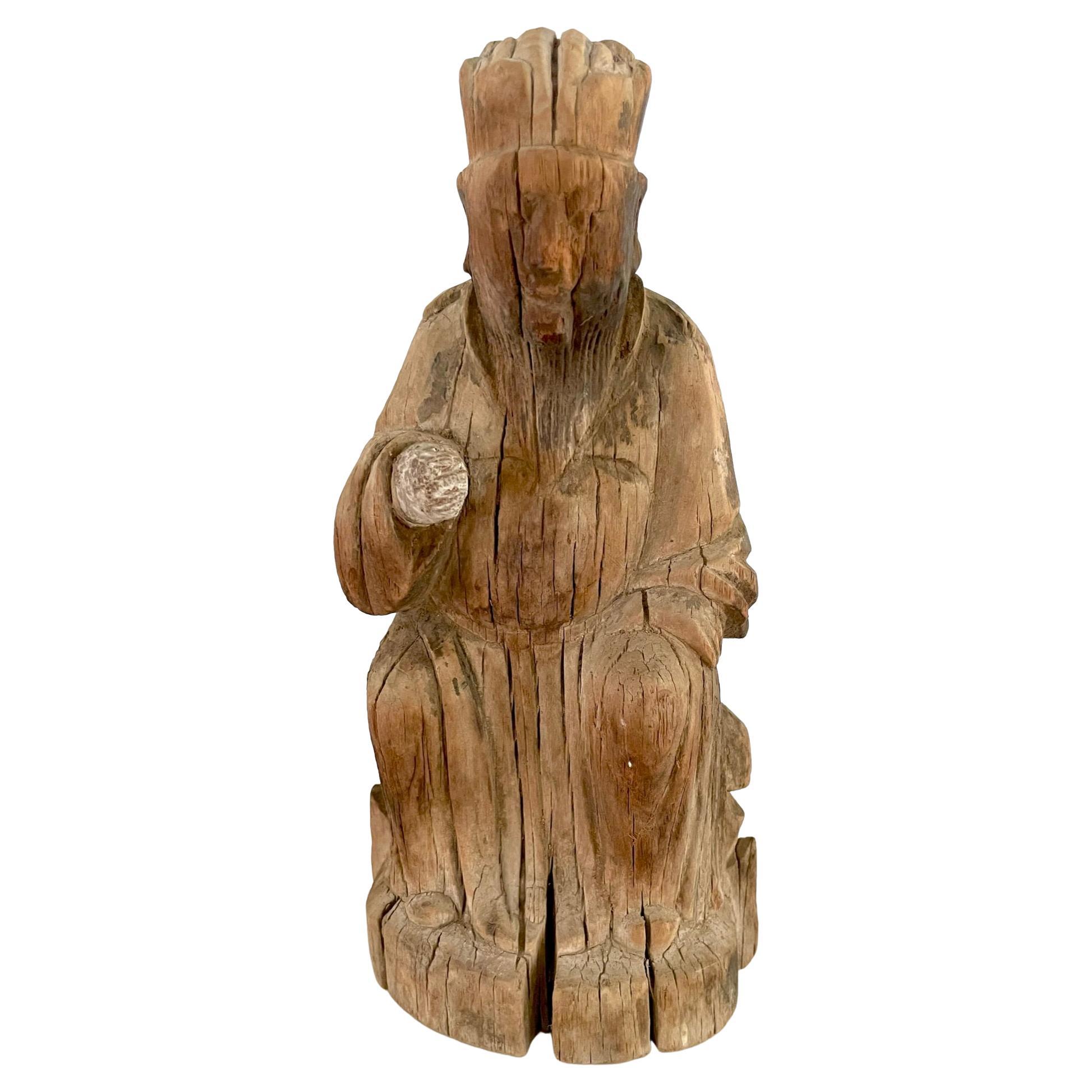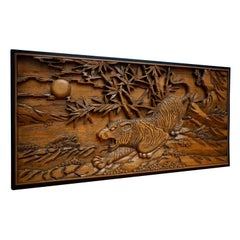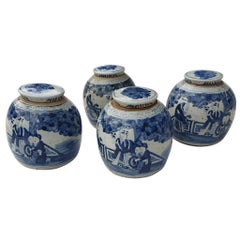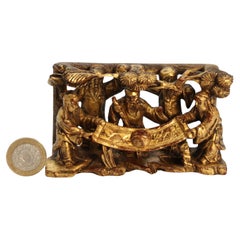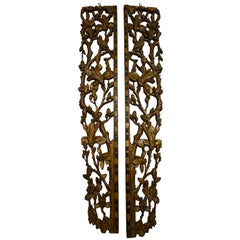
Two Carved Giltwood Mandarin Bed Ornaments - Chinese, 18th or early 19th Century
View Similar Items
Want more images or videos?
Request additional images or videos from the seller
1 of 15
Two Carved Giltwood Mandarin Bed Ornaments - Chinese, 18th or early 19th Century
About the Item
- Dimensions:Height: 64.97 in (165 cm)Width: 11.82 in (30 cm)Depth: 1.19 in (3 cm)
- Sold As:Set of 2
- Style:Chinese Export (Of the Period)
- Materials and Techniques:
- Place of Origin:
- Period:
- Date of Manufacture:1800
- Condition:Repaired: Some parts are glued again.(see last pictures). Wear consistent with age and use.
- Seller Location:Antwerp, BE
- Reference Number:1stDibs: LU95045898993
About the Seller
4.9
Vetted Seller
These experienced sellers undergo a comprehensive evaluation by our team of in-house experts.
Established in 1988
1stDibs seller since 2012
969 sales on 1stDibs
More From This SellerView All
- Larger Than Life Terracotta Buddha Bust of Guanyin, Early 20th Century, ChinaLocated in Antwerp, BEA massive larger than life terracotta buddha bust of Guan Yin, China, early 20th century. Broken and restored with wear and tear from enduring exposure to the elements. Size: 75 cm high. Weight: 40 kg. Guanyin, Kwanyin, Guanshiyin or Guanyin Pusa is the Chinese interpretation of the bodhisattva Avalokiteśvara (the goddess of comfort and mercy). In addition, she is seen in Taoism as an immortal. The scripture dedicated to her is Dabeizhou. Guanyin is the goddess of compassion and the sea. She is one of the three saints of the western paradise, along with Mahasthamaprapta and Amitabha Buddha; they are worshiped to save departed loved ones from hell and grant them entrance to the western paradise. Guanyin Chinese name Traditional Chinese 觀音 Simplified Chinese 观音 Transcriptions Full Chinese name Traditional Chinese 觀世音 Simplified Chinese 观世音 Literal meaning "[The One Who] Perceives the Sounds of the World" Transcriptions Second alternative Chinese name Traditional Chinese 觀自在 Simplified Chinese 观自在 Literal meaning "Lord who Gazes down on the World" Transcriptions Burmese name Burmese ကွမ်ယင် IPA [kwàɴ jɪ̀ɴ] Tibetan name Tibetan སྤྱན་རས་གཟིགས Vietnamese name Vietnamese alphabet Quan Âm (Quán Âm) Quán Thế Âm (Quan Thế Âm) Quán Tự Tại Chữ Hán 觀音 觀世音 觀自在 Thai name Thai กวนอิม, พระอวโลกิเตศวรโพธิสัตว์ RTGS Kuan Im, Phra Avalokitesuan Korean name Hangul 관음, 관세음, 관자재 Hanja 觀音, 觀世音, 觀自在 Transcriptions Mongolian name Mongolian script ᠨᠢᠳᠦ ᠪᠡᠷ ᠦᠵᠡᠭᠴᠢ Japanese name Kanji 観音, 観世音, 観自在 Hiragana かんのん, かんぜおん, かんじざい Transcriptions Indonesian name Indonesian Kwan Im, Kwan She Im, Awalokiteswara Filipino name Tagalog Guanyin (ᜄᜓᜀᜈᜌᜒᜈ) Sanskrit name Sanskrit अवलोकितेश्वर (Avalokiteśvara) Khmer name Khmer អវលោកិតេស្វរៈ (Avalokitesvarak), អវលោកេស្វរៈ (Avalokesvarak), លោកេស្វរៈ (Lokesvarak) Hmong name Hmong Kabyeeb, Niam-Txiv Kabyeeb, Dabpog, Niam-Txiv Dabpog Guanyin (traditional Chinese: 觀音; simplified Chinese: 观音; pinyin: Guānyīn) is a Bodhisattva associated with compassion. She is the East Asian representation of Avalokiteśvara (Sanskrit: अवलोकितेश्वर) and has been adopted by other Eastern religions, including Chinese folk religion.[note 1] She was first given the appellation "Goddess of Mercy" or "Mercy Goddess" by Jesuit missionaries in China.[1] Guanyin is short for Guanshiyin, which means "[The One Who] Perceives the Sounds of the World."[2] On the 19th day of the sixth lunar month, Guanyin's attainment of Buddhahood is celebrated.[3] Some Buddhists believe that when one of their adherents departs from this world, they are placed by Guanyin in the heart of a lotus, and then sent to the western pure land of Sukhāvatī.[4] Guanyin is often referred to as the "most widely beloved Buddhist Divinity"[5] with miraculous powers to assist all those who pray to her, as is mentioned in the Pumen chapter of Lotus Sutra and Kāraṇḍavyūha Sūtra. Several large temples in East Asia are dedicated to Guanyin, including Shaolin Monastery, Longxing Temple, Puning Temple, Nanhai Guanyin Temple, Dharma Drum Mountain, Kwan Im Thong Hood Cho Temple, Shitennō-ji, Sensō-ji, Kiyomizu-dera, Sanjūsangen-dō, and many others. Guanyin's abode and bodhimaṇḍa in India is recorded as being on Mount Potalaka. With the localization of the belief in Guanyin, each area adopted their own Potalaka. In Chinese Buddhism, Mount Putuo is considered the bodhimaṇḍa of Guanyin. Naksansa is considered to be the Potalaka of Guanyin in Korea. Japan's Potalaka is located at Fudarakusan-ji. Tibet's Potalaka is the Potala Palace. Vietnam's Potalaka is the Hương Temple. There are several pilgrimage centers for Guanyin in East Asia. Putuoshan is the main pilgrimage site in China. There is a 33 temple Guanyin pilgrimage in Korea which includes Naksansa. In Japan, there are several pilgrimages associated with Guanyin. The oldest one of them is the Saigoku Kannon Pilgrimage, a pilgrimage through 33 temples with Guanyin shrines. Guanyin is beloved by most Buddhist traditions in a nondenominational way and found in most Tibetan temples under the name Chenrézik (Wylie: Spyan ras gzigs). Guanyin is also beloved and worshipped in the temples in Nepal. The Hiranya Varna Mahavihar located in Patan is one example. Guanyin is also found in some influential Theravada temples such as Gangaramaya Temple, Kelaniya and Natha Devale nearby Temple of the Tooth...Category
Early 20th Century Chinese Chinese Export Sculptures and Carvings
MaterialsTerracotta
$3,931 Sale Price20% Off - Chinese Carved Wood Wall Art from a Hunting TigerLocated in Antwerp, BEA large 19th century Chinese carved wall plaque in wood features a hunting tiger on rocks with bamboo trees and the sun in the background. ...Category
Mid-20th Century Chinese Chinese Export Decorative Art
MaterialsWood
- One of Two Chinese Porcelain Glazed Figural Ginger Jars with Lids, 19th CenturyLocated in Antwerp, BETwo Chinese blue and white porcelain glazed decorative figural and floral ginger jars with the original removable lids, 19th century. Measure: Diameter 28 cm. Height 28 cm. Two of t...Category
Antique Late 19th Century Chinese Chinese Export Jars
MaterialsPorcelain
$655 Sale Price / item50% Off - Extraordinary Italian Baroque Gilt Wood Table Supports Early 18th CenturyLocated in Antwerp, BEA extraordinary pair of table supports, in wood with layers of gold, and with deeply carved foliate leaves, on a ( later) base , with original wooden scrolls, also deeply carved and with the same layers of gold. Both pieces were part of an important staircase, from a noble house...Category
Antique 18th Century Italian Baroque Dining Room Tables
MaterialsWood, Giltwood
- Polished Brass Tall Torchere, Candlestick or Prickets, 19th CenturyLocated in Antwerp, BEPolished brass torchere. Height 74 cm. Diameter 20 cm.Category
Antique Mid-19th Century Italian Torchères
MaterialsBrass, Copper
- Two Brass Cross OrnamentLocated in Antwerp, BEThis holy cross is carried in a procession. Brass cross ornament in great condition. The brass on this has great patina from age and use. The Cross has a strong stable base and this ...Category
Antique 19th Century Modern Religious Items
MaterialsBrass
You May Also Like
- 19th Century Chinese Carved Giltwood PanelLocated in San Diego, CAAntique 19th century Chinese carved gold gilt and painted wood wall panel or plaque with scholar and warrior figures scene. Signed on back as p...Category
Antique 19th Century Chinese Sculptures and Carvings
$2,600 Sale Price25% Off - A 19th century Chinese miniature carved giltwood figure group circa 1890Located in Central England, GBThis remarkable miniature Chinese/Cantonese carved hardwood and gold leaf figure group depicts a group of five scholars, two of them holding a large object while the other three are ...Category
Antique 1890s Chinese Chinese Export Sculptures and Carvings
MaterialsGiltwood
- Antique Chinese Carved Bamboo Brush Pot, 18th/Early 19th Century with Wood StandLocated in Norton, MAAntique Chinese Carved Bamboo Brush Pot from 18th to the early 19th Century with wood stand. An amazing sophisticated design a...Category
Antique 18th Century Sculptures and Carvings
MaterialsBamboo
- 19th Century Chinese Carved FigureLocated in Southampton, NY19th century Chinese carved figure. While this sculpture may be small it isn't lacking in its attention to detail. Across the chest of the figure you cans see two overlapping carved...Category
Antique 19th Century Chinese Qing Sculptures and Carvings
MaterialsWood
- A pair of 19th Century carved Foo temple dogs or Chinese guardian LionsLocated in London, GBChinese guardian lions, or imperial guardian lions, are a traditional Chinese architectural ornament. Typically made of stone, they are also known as stone lions or shishi (石獅; shíshī). They are known in colloquial English as lion dogs or foo dogs / fu dogs. The concept, which originated and became popular in Chinese Buddhism, features a pair of highly stylized lions—often one male with a ball and one female with a cub—which were thought to protect the building from harmful spiritual influences and harmful people that might be a threat. Used in imperial Chinese palaces and tombs, the lions subsequently spread to other parts of Asia including Japan (see komainu), Korea, Philippines, Tibet, Thailand, Myanmar, Vietnam, Sri Lanka, Nepal, Cambodia, Laos, and Malaysia. There has been extensive interaction between Chinese mythology and Confucianism, Taoism, and Buddhism. Elements of pre-Han dynasty mythology such as those in Classic of Mountains and Seas were adapted into these belief systems as they developed (in the case of Taoism), or were assimilated into Chinese culture (in the case of Buddhism). Elements from the teachings and beliefs of these systems became incorporated into Chinese mythology. For example, the Taoist belief of a spiritual Paradise became incorporated into mythology as the place where immortals and deities used to dwell. Sometimes mythological and religious ideas have become widespread across China's many regions and diverse ethnic societies. In other cases, beliefs are more limited to certain social groups, for example, the veneration of white stones by the Qiang. One mythological theme that has a long history and many variations involves a shamanic world view, for example in the cases of Mongolian shamanism among the Mongols, Hmong shamanism among the Miao people, and the shamanic beliefs of the Qing dynasty from 1643 to 1912, derived from the Manchus. Politically, mythology was often used to legitimize the dynasties of China, with the founding house of a dynasty claiming a divine descent. Mythology and philosophy. Further information: Chinese philosophy True mythology is distinguished from philosophical treatises and theories. Elaborations on the Wu Xing are not really part of mythology, although belief in five elements could appear. The Hundred Schools of Thought is a phrase suggesting the diversity of philosophical thought that developed during the Warring States of China. Then, and subsequently, philosophical movements had a complicated relationship with mythology. However, as far as they influence or are influenced by mythology, divides the philosophical camps into two rough halves, a Liberal group and a Conservative group. The liberal group being associated with the idea of individuality and change, for example as seen in the mythology of divination in China, such as the mythology of the dragon horse that delivered the eight bagua diagrams to Fu Xi, and methods of individual empowerment as seen in the Yi Jing (Book of Changes). The Liberal tendency is towards individual freedom, Daoism, and Nature. The relationship of the Conservative philosophies to mythology is seen in the legendary Nine Tripod Cauldrons, mythology about the emperors and central bureaucratic governance, Confucianism, written histories, ceremonial observances, subordination of the individual to the social groups of family and state, and a fixation on stability and enduring institutions. The distinction between the Liberal and Conservative is very general, but important in Chinese thought. Contradictions can be found in the details, however these are often traditional, such as the embrace by Confucius of the philosophical aspects of the Yi Jing, and the back-and-forth about the Mandate of Heaven wherein one dynasty ends and another begins based according to accounts (some of heavily mythological) where the Way of Heaven results in change, but then a new ethical stable dynasty becomes established. Examples of this include the stories of Yi Yin, Tang of Shang and Jie of Xia or the similar fantastic stories around Duke of Zhou and King Zhou of Shang. Mythology exists in relationship with other aspects of society and culture, such as ritual. Various rituals are explained by mythology. For example, the ritual burning of mortuary banknotes (Hell Money), lighting fireworks, and so on. A good example of the relationship of Chinese mythology and ritual is the Yubu, also known as the Steps or Paces of Yu. During the course of his activities in controlling the Great Flood, Yu was supposed to have so fatigued himself that he lost all the hair from his legs and developed a serious limp. Daoist practitioners sometimes incorporate a curiously choreographed pedal locomotion into various rituals. Mythology and practice, one explains the other: in these rituals, the sacred time of Yu merges with the sacral practice of the present. Various ideas about the nature of the earth, the universe, and their relationship to each other have historically existed as either a background or a focus of mythologies. One typical view is of a square earth separated from a round sky by sky pillars (mountains, trees, or undefined). Above the sky is the realm of Heaven, often viewed of as a vast area, with many inhabitants. Often the heavenly inhabitants are thought to be of an "as above so below" nature, their lives and social arrangements being parallel to those on earth, with a hierarchical government run by a supreme emperor, many palaces and lesser dwellings, a vast bureaucracy of many functions, clerks, guards, and servants. Below was a vast under ground land, also known as Diyu, Yellow Springs, Hell, and other terms. As time progressed, the idea of an underground land in which the souls of the departed were punished for their misdeeds during life became explicit, related to developments in Daoism and Buddhism. The underground world also came to be conceived of as inhabited by a vast bureaucracy, with kings, judges, torturers, conductors of souls, minor bureaucrats, recording secretaries, similar to the structure of society in the Middle Kingdom (earthly China). Chinese temple Dogs...Category
Antique 1860s Chinese Chinese Export Sculptures and Carvings
MaterialsHardwood
- China Mid-18th Century Wood Hand-Carved Architectural SculptureLocated in Brescia, ITThis charming Mid-19th Century fragment of wood, is a detail of an hand-carved wood column and it has its country of origin in the Oriental part of Indo-China. This is an elegant object that can be used as a paperweight or it can be a decorative object simply, to appreciate for its charming shape and for the beauty of the detailed engraving in the wood. It is only a little piece, but trought it, is possible to understand the beauty and quality of design of the building from which it is coming out. This beautiful piece can be useful as bookend also. The photos shown this antique wood fragment...Category
Antique Late 18th Century Indonesian Chinese Export Paperweights
MaterialsWood
$786 Sale Price20% Off
Recently Viewed
View AllMore Ways To Browse
Midcentury Modern Pair Of Night Table
Luxury Books
Antique Gem Print
Readers Digest Books
Vintage Parisian Title
Low Queen Bed Frame
Halloween Charms
Walnut Bedstead
Antique Queen Bed Head
Art Deco 4 Panel Folding Screen
Vintage Linen Valance
Rover Trading
Barkcloth Curtains
Broyhill Brasilia Queen
Curiosity Cupboard
Bed Built In Nightstand
Le Polene
Queen Bed Frame With Nightstands
